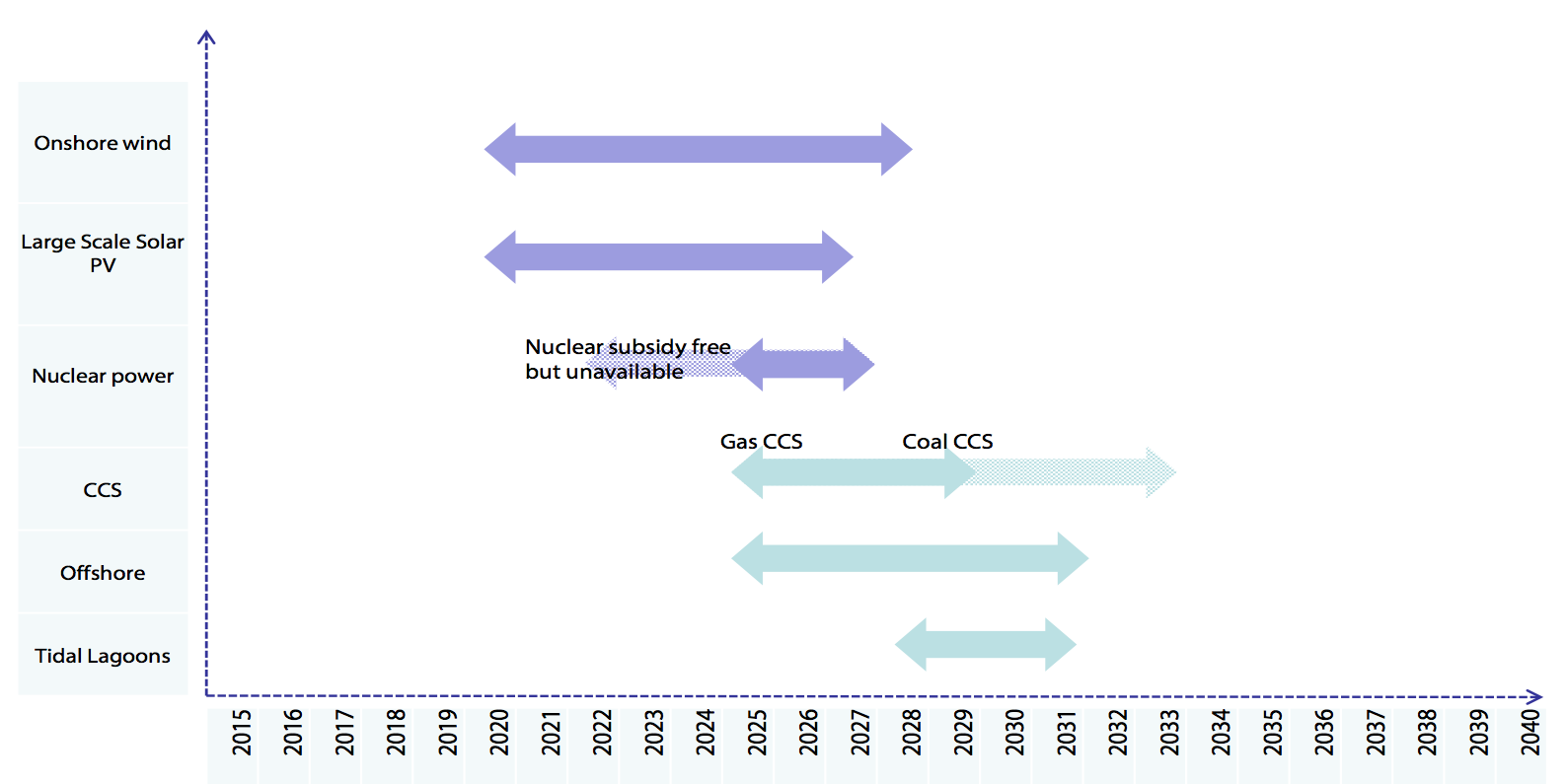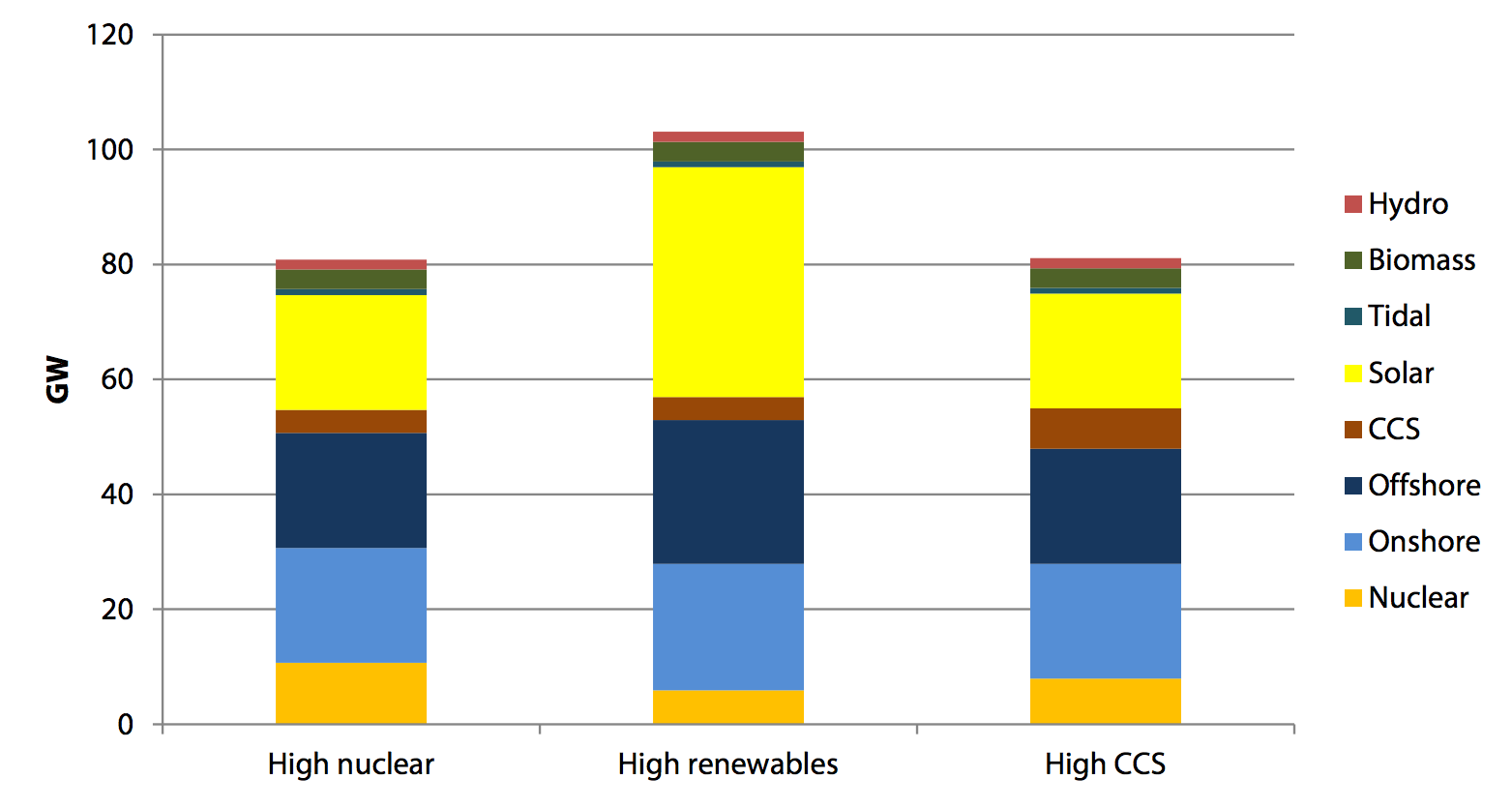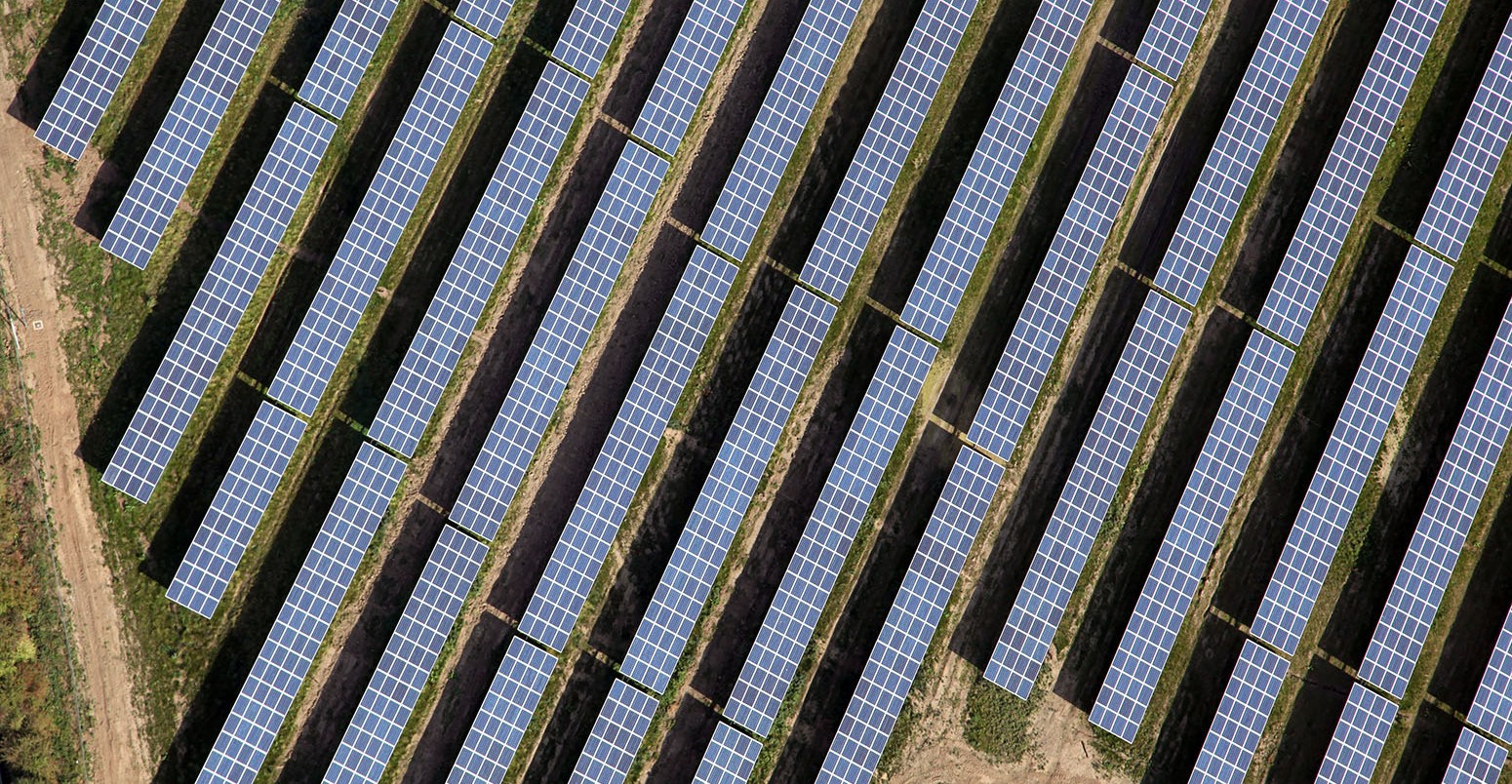CCC: UK wind and solar will be cheaper than gas by 2020
Simon Evans
10.22.15Low-carbon electricity from wind and solar farms will be cheaper than gas and effectively subsidy-free by 2020, says the Committee on Climate Change (CCC).
In a new report, the government’s official climate change advisor says that low-carbon supplies will be the most cost-effective way to fill the looming generation gap in the 2020s, as the UK’s ageing coal and nuclear plants retire. A more flexible grid will be a crucial complement to this shift.
However, the CCC also rows back from the stretching 2030 power decarbonisation target it once advocated, citing delays to the deployment of nuclear and carbon capture and storage (CCS). The report is a prelude to the CCC’s fifth carbon budget advice. On 26 November this advice will recommend a UK emissions cap for the five years from 2028 to 2032.
Carbon Brief explores what subsidy-free really means and the CCC’s new vision for the power sector in 2030.
Generation gap
The first starting points for the CCC’s report, on power sector scenarios out to 2030, is the generation gap that is starting to open up between available electricity supplies and demand, which is expected to grow through the 2020s as transport and heat are electrified.
Retiring old coal and nuclear plants are the immediate cause of this gap. David Cameron’s pledge to phase out unabated coal could bring closures forward, though he has not set a date. Matthew Bell, CCC chief executive, tells Carbon Brief his report sees unabated coal phasing out by 2026.
The second starting point for the report is the need to reach the UK’s 2050 climate goal. If society in general and the government in particular remain committed to this — and the current administration insists that it is — then the question is how to reach the target most cost-effectively.
This is not simply a question of minimising up-front costs, a point which the CCC is keen to emphasise. It says that the low-carbon transition to 2050 will require investments now that will only pay off in reduced costs much later.
New nuclear could fall into this category, the CCC says, though it is notably equivocal. At the high price of the Hinkley Point scheme in Somerset, confirmed this week in a deal with France and China, a new nuclear programme will be “valuable” the CCC says. However, if costs “escalate” or subsequent plants are not cheaper, that value “could be called into question”.
Instead, the foremost example of investing now to benefit later is carbon capture and storage (CCS). Though it is expensive and unproven today, the CCC says it has the potential to halve the overall costs of meeting the 2050 target. It will also be essential to decarbonising heavy industry.
Similarly, the CCC advises against abandoning offshore wind. Most of the investment to help it become cost-competitive has already been committed, the CCC says, and it holds the potential to supply the majority of UK power needs, with few of the risks faced by nuclear or onshore wind.
Cheaper than gas
The CCC says offshore wind and CCS could be cheaper than gas by the late 2020s (below). Yet some 20 gigawatts (GW) of new capacity is needed in the early 2020s to plug the generation gap.
What is the cheapest way to fill it? Mike Thompson, head of carbon budgets for the CCC, tells Carbon Brief: “Onshore wind and solar will be subsidy-free from 2020”. At its simplest, this means they will be the cheapest options. However, it’s worth exploring the underlying assumptions.

Years when low-carbon technologies become cheaper than unabated gas, facing the full costs of its CO2 emissions. These costs are above expected market CO2 prices. The ranges reflect a spread of wholesale gas prices and renewable site characteristics. Source: The CCC.
First, the CCC says this subsidy-free nirvana won’t arrive without more clarity from government. It has set a cap for low-carbon support, called the levy control framework (LCF), that only runs until 2020. Visibility out to 2025 is needed “pretty sharply”, says Thompson.
Second, the comparator is unabated gas facing the full costs of its CO2 emissions. These are the CO2 prices the CCC says would be consistent with reaching the UK’s 2050 target. They rise from £23/tCO2 in 2020 to £78/tCO2 in 2030.
The CCC expects market CO2 prices to be lower than this. So, if gas appears to be cheaper than onshore wind and solar, it will only be because of an implicit, hidden subsidy that offsets true CO2 costs. The CCC explicitly ignores another hidden subsidy, in the air pollution costs of burning gas.
A third assumption is to include the CCC’s most detailed attempt yet to quantify the system costs of intermittent renewables such as wind and solar. The costs of coping with swings in output and providing backup for still, cloudless days have long been fodder for critics of renewables.
Yet the CCC finds these costs will be relatively low, adding around £10 per megawatt hour (MWh) to the costs of wind and solar in 2030 if 35-40% of our power comes from intermittent renewables. This might double to £20/MWh if intermittent renewables reach 50%.
It’s worth adding that these costs arise only after massive increases in renewable capacities compared to today, with up to 50GW of wind capacity and 40GW of solar in 2030. This compares to 13GW of wind and 8GW of solar today.
Moreover, some of these system costs will be offset by benefits. These include the merit order effect, where the highest-cost power stations are switched off when the wind blows or sun shines. A recent report by small energy firm Good Energy values this effect at £1.6bn in 2014. While the CCC analysis takes a slightly different approach, it agrees that the effect is real — and significant.
Subsidy-free
Taken in the round, these assumptions mean the CCC expects onshore wind and ground-mounted solar farms to be cheaper than gas generation by 2020. If wholesale gas is particularly cheap, wind and solar still become subsidy-free, but slightly later.
In short, the report says low-carbon generating technologies “represent good-value investments for a society committed to climate targets”.
Others are bound to question the precise mixture of costs, externalities and assumptions used by the CCC to show low-carbon generation to be subsidy-free during the 2020s. For instance, Bloomberg New Energy Finance says onshore wind is already cheaper than gas in the UK.
Richard Howard, of the right-leaning thinktank Policy Exchange, has a clear discussion of the ways subsidy-free might be defined. What is clear is that as prices continue to fall for renewables, their costs compared to gas are only becoming more favourable — even if system costs are included.
A final, but important point is that subsidy-free does not necessarily mean viable on competitive markets. Indeed, no new generation capacity will be built in the UK at current wholesale prices, which reflect the costs of running old plant that has covered its capital costs long ago.
Instead, says the CCC’s Thompson, low-carbon generation is likely to need a subsidy-free contract for difference (CfD). This would be limited to a level equivalent to the cost of building and operating new unabated gas, and would reduce the risks of investment by guaranteeing prices.
The idea of subsidy-free CfDs appears to be gaining currency. It was backed in a new report from the UK Energy Research Centre, published this week, and the Department for Energy and Climate Change (DECC) is said to be “interested”.
Decarbonisation target
So, where does that leave the power system out to 2030? The CCC advocates a “portfolio” of low-carbon options rather than a specific mix, but says it would be “appropriate” to target power sector emissions “towards the upper end” of 50-100g of CO2 per kilowatt hour (kWh) of electricity.
This is less ambitious than the 50gCO2/kWh it once advocated. Why the change? Though the CCC’s latest work reflects recent subsidy cuts for renewables, their progress to date has exceeded expectations. Instead, the CCC’s Thompson tells Carbon Brief that delays to plans for new nuclear and CCS are the major cause. The report says:
[This] reflects delays to new nuclear and CCS projects alongside good progress for renewable technologies, as well as an improved understanding of the system costs of reaching 50gCO2/kWh by 2030.
These delays are reflected in some of the CCC’s 100g-compliant scenarios (chart, below), which can be compared to the 50g scenarios it drew up in 2013. There is a maximum of 11GW of nuclear (orange bars), for instance, compared to 19GW in the 2013 scenarios. For CCS, the maximum has fallen from 15GW to 7GW.
Even the CCC’s 100g intensity limit maximum remains ambitious, however. Its scenarios see onshore (light blue) and offshore wind (dark blue) capacity reach a combined minimum of 40GW, up from 12GW today, with solar rising from 8GW today to at least 20GW (yellow).

Low-carbon generation capacity in 2030, in scenarios compatible with the CCC’s 100gCO2/kWh maximum carbon intensity for the power sector. Source: The CCC.
A big uptick in expectations for solar is notable in the new scenarios. In 2013, the CCC cited DECC estimates for solar costs reaching £75/MWh in 2030, a price it has almost reached already. The CCC appears to have expected as little as 8GW solar in 2030, a level it reached in March this year.
Flexibility
The key to cost-effectively integrating such large quantities of intermittent renewables into the future energy mix is grid flexibility, the CCC says, which will also help ensure security of supplies.
The report devotes a lengthy chapter to setting out what this means. In summary it says:
It will be important to improve the flexibility of the power sector. That will require investment in flexible gas-fired generating capacity alongside expansion of international interconnection, flexible demand response and potentially electricity storage. The costs of these measures are included in our assessment of intermittency and system costs.
Strangely, while the CCC expects interconnector capacity to at least double, it does not include electricity imports in its modelling for 2030, meaning it is likely to have overestimated the costs and difficulty of integrating low-carbon to the grid. Imports supplied around 6% of UK power last year.
Catherine Mitchell, professor of energy policy at the University of Exeter, says in a statement:
[The report] confirms what many professionals know already, that the way forward in electricity systems is through flexibility and efficiency, using demand response and interconnectors with other countries, and that centralised baseload generation will increasingly be a thing of the past.
This shift is already visible in the changing face of the UK’s electricity mix, mapped by Carbon Brief earlier this month. The CCC suggests this shift towards low-carbon should accelerate — not only for the climate, but because it will be cheaper than the alternatives.
Main image: Aerial view of a solar farm under construction in the UK.
-
CCC: UK wind and solar will be cheaper than gas by 2020
-
Low-carbon electricity from wind and solar farms will be cheaper than gas and effectively subsidy-free by 2020, says new report by the Committee on Climate Change


